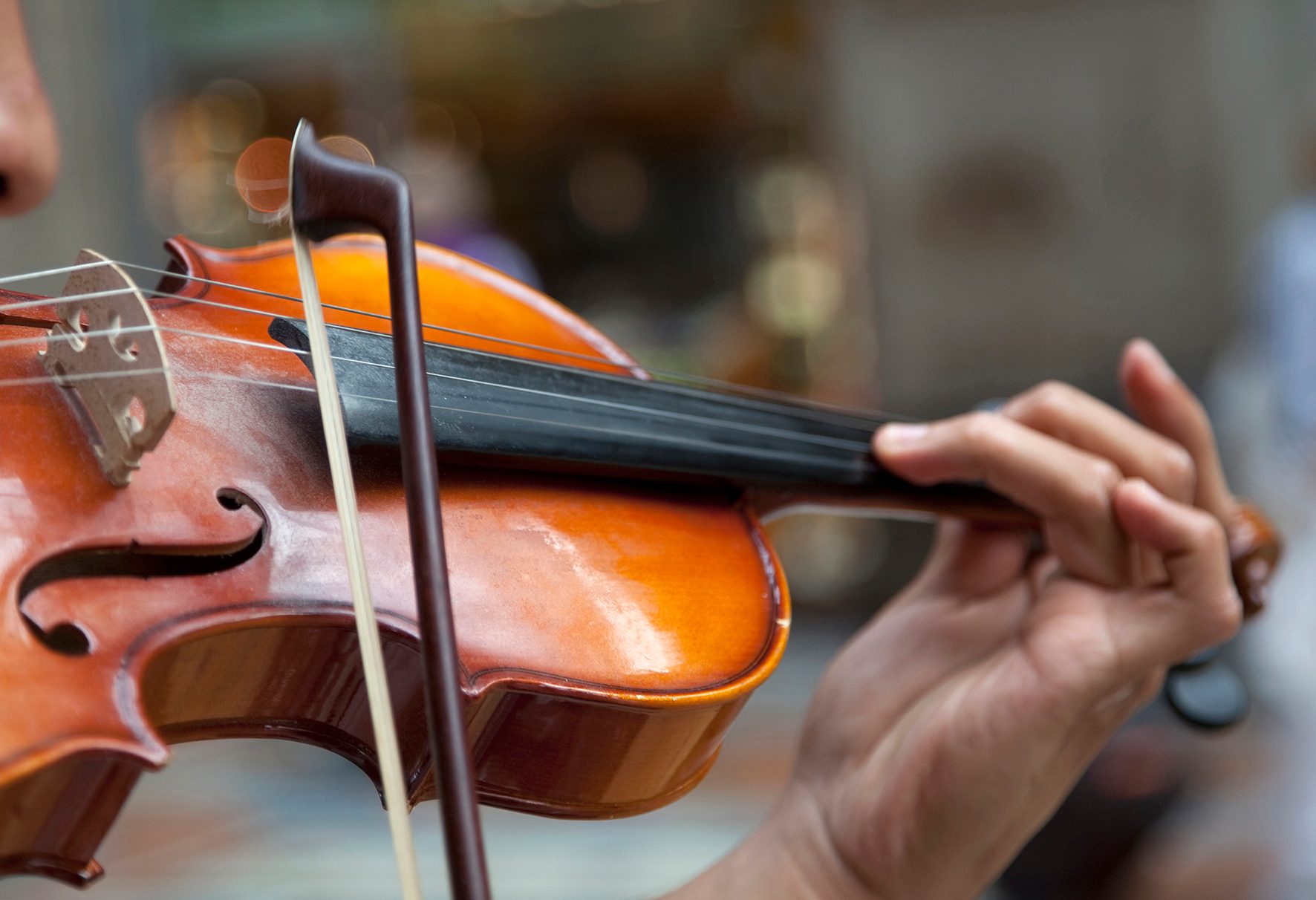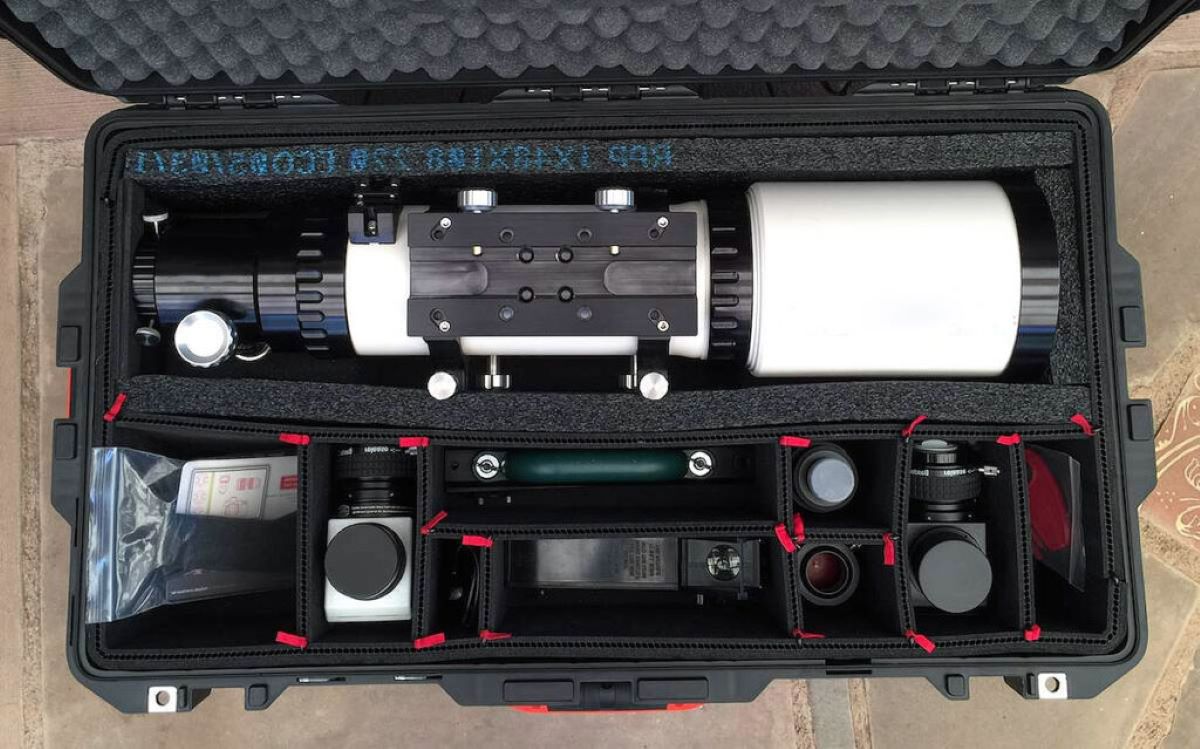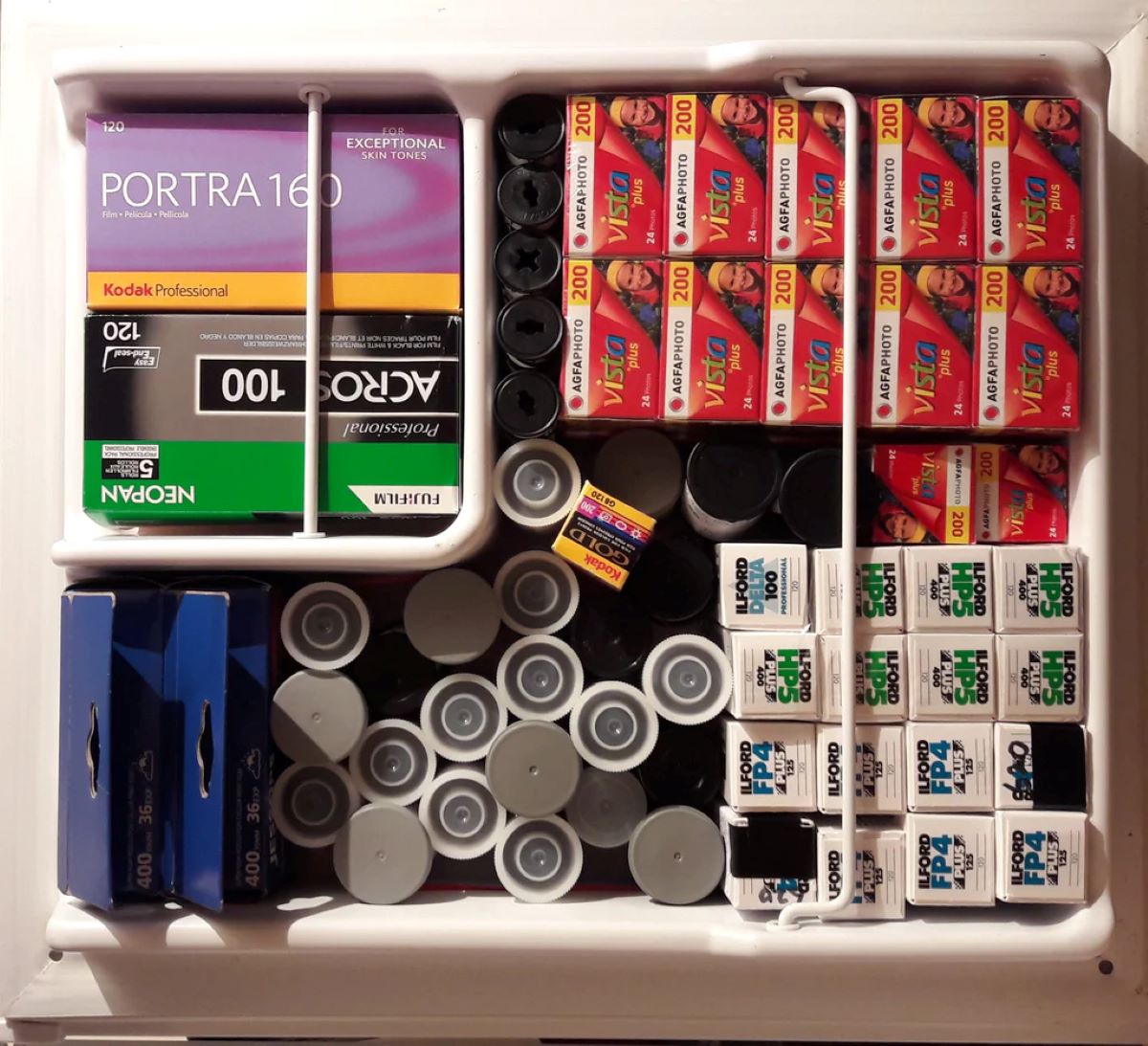

Articles
How To Store Violin
Modified: August 16, 2024
Learn the best techniques for storing your violin in our informative articles. Keep your instrument safe and protected with our expert tips and recommendations.
(Many of the links in this article redirect to a specific reviewed product. Your purchase of these products through affiliate links helps to generate commission for Storables.com, at no extra cost. Learn more)
Introduction
Storing a violin properly is crucial in maintaining its quality, sound, and longevity. Whether you are a professional musician or a beginner, taking care of your violin during periods of non-use is essential to prevent damage and ensure it remains in optimal condition. In this article, we will discuss the importance of proper violin storage and provide a comprehensive guide on how to protect your instrument during periods of inactivity.
For violin enthusiasts, the instrument is not just a tool but an extension of themselves. Therefore, it’s essential to handle it with care, keeping in mind factors like climate, humidity, and physical protection. By following the steps outlined in this guide, you can ensure that your violin stays safe and in peak condition, ready for your next practice session or performance.
Key Takeaways:
- Properly storing your violin is crucial for maintaining its quality and longevity. Select a durable case, choose an ideal storage location, and prepare the instrument for storage to ensure its safety and protection.
- Regularly inspect and maintain your violin, even during storage, to preserve its quality and playing condition. Monitor humidity levels, clean and polish the instrument, and address any potential issues to keep your violin in top shape.
Read more: How To Store Store-Bought Bread
Selecting the Proper Case
When it comes to storing your violin, choosing the right case is of utmost importance. The case should provide adequate protection from potential accidents, such as bumps or falls, as well as provide insulation against changes in temperature and humidity. Here are a few factors to consider when selecting a violin case for storage:
- Hardshell or Softshell Case: Hardshell cases offer the highest level of protection due to their sturdy construction. They are typically made of materials like wood or fiberglass and provide a secure and padded compartment for the violin. Softshell cases, on the other hand, are lighter and more affordable but offer less protection.
- Interior Padding: Look for a case that has ample cushioning on the inside to absorb shocks and prevent the violin from moving around inside the case. The padding should be soft and non-abrasive to avoid any scratches or damage to the instrument.
- Hygrometer: Consider a case that comes with a built-in hygrometer or space to attach a separate one. A hygrometer measures the humidity level inside the case, allowing you to monitor and maintain the ideal humidity for your violin.
- Storage Compartments: It’s beneficial to have additional compartments in the case to store accessories such as spare strings, rosin, and a cleaning cloth. This ensures that everything you need for maintenance and playing is conveniently stored in one place.
Remember, the quality of the violin case directly affects the level of protection it provides. Investing in a durable and well-padded case is a wise decision to safeguard your instrument during storage.
Choosing the Ideal Location for Storage
Where you store your violin plays a crucial role in maintaining its condition. The ideal storage location should have stable temperature and humidity levels, free from excessive moisture, direct sunlight, and extreme temperature fluctuations. Here are some important considerations when choosing a storage location for your violin:
- Avoiding Areas with Extreme Temperature: Keep your violin away from places with extreme temperatures, such as attics, garages, or basements. These areas are prone to drastic temperature changes that can damage the wood and affect the overall structure of the instrument.
- Preventing Exposure to Direct Sunlight: Sunlight can cause irreversible damage to the varnish and wood of your violin. It’s important to store the instrument in a room or area that is shielded from direct sunlight.
- Controlling Humidity Levels: Excessive humidity can lead to swelling, warping, or cracks in the wood, while low humidity can cause the wood to dry out and crack. Aim for a humidity level between 40-60% to ensure the optimal condition of your violin. You can use a room humidifier or dehumidifier, or even a dedicated instrument humidifier, to regulate humidity levels.
- Considering a Climate-Controlled Environment: If you live in an area with extreme climate conditions, you may want to consider storing your violin in a climate-controlled room or using a specialized storage unit. These environments provide consistent temperature and humidity levels throughout the year, ensuring the safety of your instrument.
By selecting an appropriate storage location, you can protect your violin from environmental factors that can cause significant damage. Remember to regularly monitor the condition of the storage area to ensure the best preservation of your instrument.
Preparing the Violin for Storage
Before you securely store your violin, it is essential to properly prepare it to minimize the risk of damage during the storage period. Follow these steps to ensure your violin is in the best condition before storage:
- Clean the Violin: Use a soft and clean cloth to gently wipe the violin, removing any dust, rosin residue, or fingerprints. Avoid using any cleaning solutions or chemicals, as they can potentially harm the finish of the instrument.
- Loosen the Bow Hair: Loosen the tension of the bow hair by turning the tension screw counterclockwise. This helps to relieve pressure on the bow and prevents warping or weakening of the stick during storage.
- Remove the Chin Rest and Shoulder Rest: If your violin has a removable chin rest or shoulder rest, it is advisable to take them off before storing the instrument. Leaving these accessories attached can cause unnecessary pressure on the instrument, potentially leading to damage.
- Inspect for any Damage: Take a close look at the violin for any signs of wear, damage, or loose parts. Pay attention to the pegs, tailpiece, and fine tuners. If you notice any issues, it is advisable to have a luthier inspect and repair the instrument before storing it.
- Apply a Light Coat of Oil: Applying a small amount of violin oil to the fingerboard can help prevent it from drying out during storage. This step is particularly important if you live in a dry climate.
By following these steps, you can ensure that your violin is clean, in good condition, and properly prepared for storage. Taking the time to prepare your instrument will help maintain its integrity and prevent any potential damage during the period of non-use.
Securing the Strings and Bridge
Properly securing the strings and bridge of your violin is crucial to prevent any shifting or damage while in storage. Follow these steps to ensure that your instrument is protected during this time:
- Loosen the Strings: Loosen the tension of the strings by turning the tuning pegs counterclockwise. This relieves the pressure on the neck and bridge, preventing any potential warping or damage.
- Protect the Bridge: Place a small piece of cloth or a bridge protector on the violin to prevent the bridge from leaning or collapsing during storage. This offers additional support and stability to the bridge.
- Check the Tailpiece: Ensure that the tailpiece is properly aligned and secure. If needed, adjust the tailpiece to ensure that it is centered and not leaning towards one side.
- Protect the Strings: To prevent any scratching or damage to the strings, you can place a soft cloth or tissue between the strings and the fingerboard. This helps to cushion and protect the strings during storage.
- Inspect for any Loose Parts: Carefully check all the fine tuners, tailpiece, and chinrest to ensure that they are securely fastened. Tighten any loose parts to prevent them from shifting or causing damage to the instrument.
Securing the strings and bridge of your violin is essential in maintaining its proper alignment and overall condition during storage. Taking these precautions will minimize the risk of any damage to your instrument and ensure that it is ready to be played when you retrieve it from storage.
Read more: How To Store Basil From Grocery Store
Removing the Bow and Rosin
When storing your violin, it is important to remove the bow and rosin to prevent any potential damage or stress on the instrument. Follow these steps to properly remove and store the bow and rosin:
- Clean the Bow: Use a clean cloth to gently wipe off any excess rosin from the bow hair and stick. This helps prevent the build-up of rosin residue, which can affect the quality of sound produced when playing the violin.
- Loosen the Bow Hair: Loosen the tension of the bow hair by turning the tension screw counterclockwise until it is sufficiently slack. Avoid leaving the bow hair overly tightened, as it can cause unnecessary strain on the bow stick.
- Remove the Bow from the Strings: Once the bow hair is loosened, carefully remove the bow from the strings by sliding it gently toward the tailpiece. Avoid any sudden or forceful movements that could potentially damage the violin or the bow.
- Store the Bow Properly: Place the bow in a designated bow holder or a bow sock to protect it during storage. Ensure that the hair of the bow is facing upward to avoid any warping or misalignment of the hair.
- Store Rosin Separately: Keep your rosin in a separate container or pouch to prevent it from directly contacting the violin. Rosin residue can transfer to the violin, causing buildup and potential damage to the varnish. Store the rosin in a cool and dry place to maintain its quality.
By removing the bow and rosin from your violin before storage, you minimize the risk of any tension or pressure on the instrument. Properly storing the bow and keeping the rosin separate ensures that both are in optimal condition when it’s time to play again.
Store your violin in a hard case when not in use to protect it from damage. Keep the case in a cool, dry place away from direct sunlight and extreme temperatures to prevent warping or cracking.
Cleaning and Polishing the Violin
Before storing your violin, it’s essential to clean and polish it to maintain its appearance and protect the wood. Follow these steps to effectively clean and polish your violin:
- Dust the Violin: Use a soft and dry cloth to gently remove any dust or debris from the surface of the instrument. Be careful not to apply too much pressure or rub too vigorously, as this can cause scratches.
- Apply Polish: Use a high-quality violin polish specifically made for instrument finishes. Apply a small amount of polish to a clean cloth and gently rub it onto the wood in a circular motion. Pay attention to areas such as the back, sides, and scroll. Avoid applying polish to the fingerboard, as it may affect playability.
- Polish the Varnish: Continue to polish the varnish until it appears clean and shiny. Take care not to over-polish and remove too much of the varnish layer. Less is more when it comes to polishing. Use a separate clean cloth to remove any excess polish after polishing.
- Clean the Strings: Using a soft cloth or a cotton swab, gently wipe the strings to remove any rosin residue or sweat. This helps to extend the lifespan of the strings and prevents any build-up that can affect the sound quality.
- Final Inspection: Take a close look at the violin after cleaning and polishing to ensure that no polish residue remains. Check for any smudges or streaks and gently remove them using a clean, dry cloth.
Regular cleaning and polishing of your violin not only enhance its appearance but also protect the wood and varnish. It is recommended to clean and polish the instrument at least once every few months or as needed. This practice helps maintain the beauty and integrity of the violin.
Placing the Violin in the Case
Once you have prepared the violin for storage and completed the necessary cleaning and polishing, it is time to securely place the instrument in its case. Follow these steps to ensure that your violin is properly protected inside the case:
- Open the Case: Carefully open the violin case, ensuring that the latches or zippers are fully undone.
- Position the Violin: Hold the violin by the neck and gently position it inside the case, making sure that it lies flat within the designated compartment. Avoid any sudden movements or accidental contact with the sides of the case.
- Secure the Violin: Use the neck strap or cushioning to secure the violin in place. You can also use a soft cloth or a dedicated violin blanket to provide additional protection and prevent any movement inside the case.
- Store Accessories: Place any necessary accessories, such as spare strings, rosin, and a cleaning cloth, in the designated compartments within the case. Make sure they are stored securely and won’t come into direct contact with the violin.
- Close the Case: Ensure that all compartments are securely closed before closing and latching or zipping the case. Double-check that everything is in place and that the case is sealed properly.
Properly placing your violin inside the case ensures its safety during storage. By taking these steps, you can minimize the risk of any unnecessary movement or damage to the instrument while it is not in use. Remember to handle the case with care and avoid any rough handling or dropping that could potentially harm the violin.
Maintaining Proper Humidity Levels
Maintaining the proper humidity levels is crucial for the well-being of your violin during storage. Fluctuations in humidity can cause the wood to expand or contract, leading to potential damage and affecting the tone and playability of the instrument. Here are some tips to help you maintain the ideal humidity for your violin:
- Use a hygrometer: Invest in a reliable hygrometer to monitor the humidity level in the room where you store your violin. Place the hygrometer near the case to get an accurate reading of the humidity surrounding the instrument.
- Keep humidity between 40-60%: The ideal humidity range for violin storage is between 40-60%. If the humidity level falls below 40%, use a room humidifier to increase the moisture. If it exceeds 60%, consider using a dehumidifier to bring it down to the desired range.
- Avoid extreme humidity changes: Rapid changes in humidity can cause stress on the wood of the violin. Try to maintain a stable humidity level to prevent the wood from expanding or contracting too quickly, which could lead to cracks or warping.
- Store in a humidity-controlled environment: If you live in an area with extreme climate conditions, consider storing your violin in a dedicated instrument storage unit or a room with climate control. These environments provide a consistent humidity level, reducing the risk of damage to your violin.
- Use a dedicated instrument humidifier: For regions with low humidity, using a dedicated instrument humidifier inside the case can help maintain the moisture level and prevent the wood from drying out. Be sure to follow the manufacturer’s instructions when using humidifiers.
Properly controlling the humidity levels is essential to preserve the quality and integrity of your violin. By monitoring and maintaining the ideal humidity range, you can protect your instrument from potential damage caused by extreme or fluctuating humidity conditions.
Read more: How To Store Jordans
Regularly Inspecting and Maintaining the Violin
To ensure that your violin remains in optimal condition, it is important to regularly inspect and maintain the instrument, even while it is in storage. Follow these steps to keep your violin in top shape:
- Inspect for any damage: Regularly check your violin for any signs of damage, such as cracks, loose parts, or wear on the strings. If you notice anything unusual, it is recommended to take the instrument to a professional luthier for inspection and repair.
- Change strings if necessary: Over time, strings can lose their quality and sound. If your strings show signs of wear, such as fraying or a dull tone, it may be time to replace them. Consult with a violin specialist to find the appropriate strings for your instrument.
- Re-hair the bow when needed: Bow hair can become worn or damaged over time. If you notice that the bow hair is no longer gripping or producing a good sound, it may be necessary to have the bow re-haired by a professional bow maker or repairer.
- Keep the fingerboard clean: Regularly wipe the fingerboard with a soft cloth to remove any dirt or residue. This helps maintain the smoothness and playability of the instrument.
- Maintain proper bridge alignment: Keep an eye on the bridge alignment to ensure that it remains straight and centered. Any adjustments should be made by a professional to avoid damage to the instrument.
- Revisit humidity levels: Continuously monitor the humidity levels in your storage area and adjust as necessary to maintain the optimal range for your violin. Be mindful of seasonal changes that can affect humidity levels.
Regular inspection and maintenance of your violin, even during storage, are crucial in preserving its quality and longevity. By staying proactive, you can catch any issues early on and take the necessary steps to keep your violin in excellent playing condition.
Conclusion
Properly storing your violin is essential to maintain its quality, sound, and overall condition. By following the steps outlined in this guide, you can ensure that your instrument remains safe and protected during periods of non-use. From selecting the right case to maintaining proper humidity levels, each step plays a crucial role in preserving the integrity of your violin.
Remember to select a case that offers adequate protection, paying attention to interior padding and storage compartments. Choose a suitable location for storage that maintains stable temperature and humidity levels and avoids exposure to direct sunlight or extreme temperature changes. Prepare your violin for storage by cleaning it, loosening the strings, and removing accessories like the bow and rosin.
Securing the strings and bridge, as well as cleaning and polishing the violin, are essential steps that help maintain its condition. Always place the violin in its case securely, ensuring that the instrument is properly positioned and all compartments are closed. Monitor and maintain proper humidity levels to prevent damage caused by fluctuations.
Furthermore, regularly inspect and maintain the violin, even while in storage. Check for any damage, change the strings if needed, and address bow issues promptly. Keep the fingerboard clean and ensure proper bridge alignment. Continuously monitor humidity levels to preserve the quality of the wood.
Remember that your violin is a precious and delicate instrument, deserving of proper care and attention. By following these steps, you can protect your investment and ensure that your violin is ready to produce beautiful music whenever you retrieve it from storage.
So, take the time to store your violin properly, as it will reward you with years of playing delight and preserve its value for generations to come.
Frequently Asked Questions about How To Store Violin
Was this page helpful?
At Storables.com, we guarantee accurate and reliable information. Our content, validated by Expert Board Contributors, is crafted following stringent Editorial Policies. We're committed to providing you with well-researched, expert-backed insights for all your informational needs.














0 thoughts on “How To Store Violin”